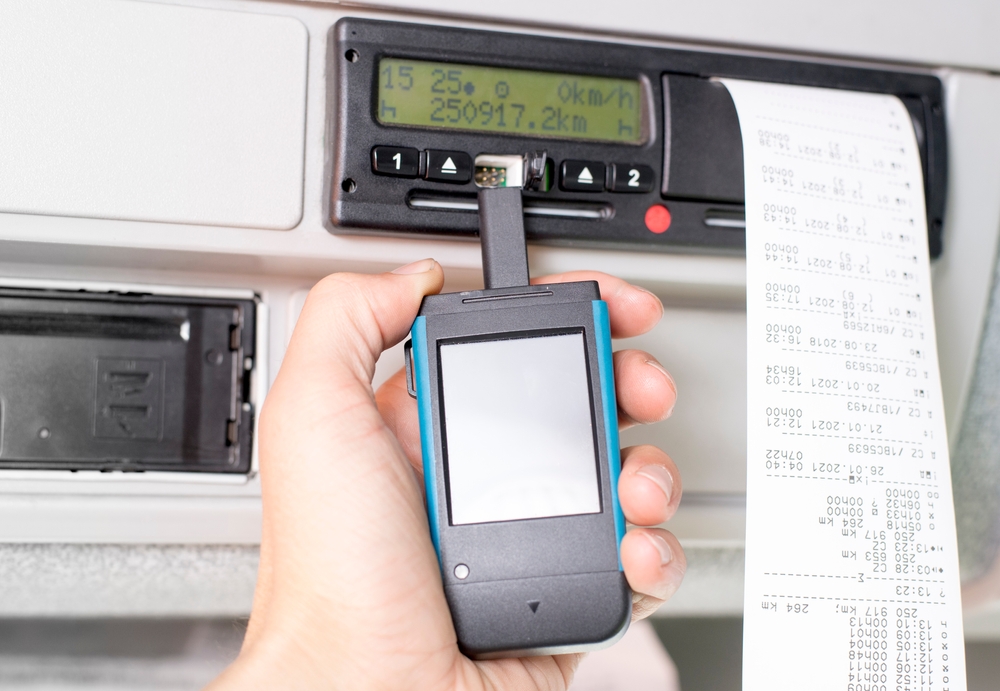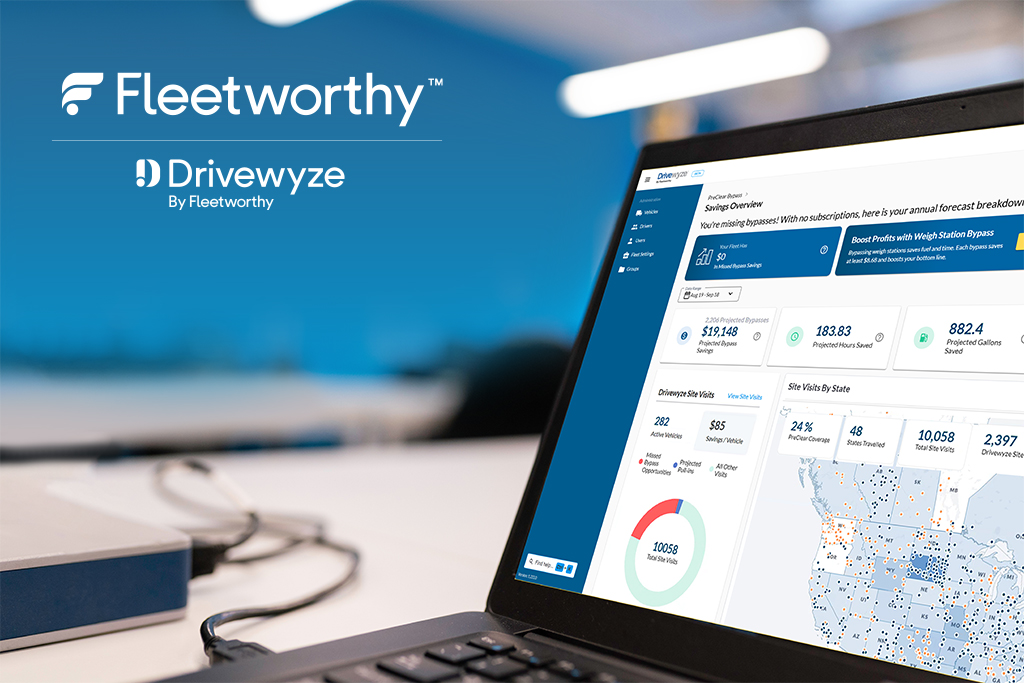Safety and compliance are not just regulatory requirements—they are critical to the overall success and sustainability of a fleet operation. At the heart of these regulations lies the U.S. Department of Transportation (DOT) Hours of Service (HOS) rules, established by the Federal Motor Carrier Safety Administration (FMCSA). These rules are designed to prevent driver fatigue, promote road safety, and ensure drivers are well-rested and alert behind the wheel.
For fleet managers, understanding and effectively managing DOT Hours of Service is essential. Not only does it help avoid costly violations and penalties during roadside inspections or DOT audits, but it also improves driver well-being and operational efficiency.
This guide will break down the key components of the DOT HOS regulations, highlight common pitfalls, and provide actionable insights into maintaining compliance through best practices and smart technology solutions. Whether you’re overseeing a small regional fleet or managing a large-scale national operation, mastering HOS is a fundamental part of running a safe, compliant, and high-performing fleet.
What Are DOT Hours of Service?
Definition and Regulatory Background
DOT Hours of Service are a set of federal regulations issued by the Federal Motor Carrier Safety Administration that govern the working hours of commercial motor vehicle (CMV) drivers in the United States. These rules dictate how long drivers can be on the road, how much rest they must get between shifts, and how many consecutive hours they can operate a vehicle before a break is required.
The foundation of HOS regulations was laid to reduce fatigue-related crashes and ensure that drivers have adequate time to rest. Over the years, the FMCSA has adjusted and refined the HOS rules based on research, public feedback, and industry trends. These regulations are codified in Title 49 of the Code of Federal Regulations (CFR), Part 395, and apply to most drivers of commercial vehicles engaged in interstate commerce.
Purpose of the HOS Regulations
The primary goal of HOS regulations is to improve road safety by reducing driver fatigue, which is a leading cause of serious accidents involving commercial vehicles. Fatigue impairs reaction time, attention, and decision-making—similar to driving under the influence of alcohol.
Beyond safety, HOS rules are also designed to:
- Promote driver health and well-being by enforcing regular rest periods
- Maintain fair working conditions across the trucking industry
- Ensure regulatory consistency across states
- Provide clear, enforceable limits for both drivers and fleet operators
Ultimately, HOS regulations balance safety with operational demands, helping fleets remain compliant while keeping freight moving efficiently.
Agencies Involved (FMCSA, DOT)
The Federal Motor Carrier Safety Administration, a division of the U.S. Department of Transportation, is the primary agency responsible for developing and enforcing HOS rules. The FMCSA oversees compliance, performs audits, investigates violations, and continuously evaluates data to improve regulations.
Meanwhile, the DOT provides overarching guidance and funding to promote transportation safety across all modes, including trucking. Together, these agencies play a critical role in maintaining a safer highway system by regulating driver behavior, enforcing laws, and implementing new technologies like Electronic Logging Devices (ELDs) to ensure accurate HOS tracking.
Key DOT HOS Rules Explained
For fleet managers, it’s critical to understand the core components of the DOT Hours of Service rules to keep drivers compliant, avoid violations, and support safe operation. Below are the key HOS rules that govern how commercial drivers can operate on the road:
11-Hour Driving Limit
Drivers are permitted to drive a maximum of 11 hours after 10 consecutive hours off duty. This rule is the cornerstone of the HOS framework, ensuring that drivers get adequate rest before embarking on their shift. Once the 11-hour driving time is reached, the driver must go off duty for another rest period.
14-Hour On-Duty Window
Drivers have a 14-hour window to complete all driving and on-duty work (including loading/unloading, inspections, fueling, etc.) after coming on duty following a 10-hour break. Importantly, breaks and non-driving time do not pause the 14-hour clock. Once that window closes, no more driving is allowed until the driver gets another full 10-hour rest.
Example: If a driver starts their day at 6:00 a.m., their 14-hour on-duty clock runs out at 8:00 p.m., regardless of how many hours they’ve actually spent driving.
30-Minute Rest Break
After 8 cumulative hours of driving, a driver is required to take at least a 30-minute break before continuing. This break can be taken as off-duty, sleeper berth, or on-duty not driving—providing some flexibility, as long as the driver isn’t driving during that time.
This rule aims to reduce mental and physical fatigue during longer stretches of driving and promote overall safety.
60/70-Hour Limit
Drivers must also comply with weekly limits on their total on-duty hours:
- 60 hours in 7 consecutive days (if the company doesn’t operate every day)
- 70 hours in 8 consecutive days (if the company operates every day)
These cumulative limits help prevent overwork and allow time for sufficient rest each week. Once the maximum is reached, the driver can’t drive again until they’ve taken enough off-duty time to fall below the limit.
34-Hour Restart Rule
To reset their 60 or 70-hour weekly clock, a driver must take at least 34 consecutive hours off duty. This is known as the 34-hour restart and is commonly used to give drivers a full break and begin a new duty cycle. The restart can be taken at any time and includes at least two nights of rest, which promotes a healthier work-rest balance.
Real-World Application Scenarios
- Driver A starts work at 7:00 a.m., spends 2 hours loading, drives 4 hours, takes a 30-minute break, then drives another 6 hours. This driver hits the 11-hour driving limit and must stop driving, even though their 14-hour window may still be open.
- Driver B drives 8 hours straight without a break. Before continuing, they must take a 30-minute rest—even if they haven’t hit the 11-hour limit—because of the 8-hour cumulative driving rule.
- Driver C accumulates 70 hours of on-duty time over 8 days. To reset, they take a 34-hour off-duty break starting Friday evening. By Sunday morning, they are eligible to restart their weekly cycle and return to duty.
These rules might seem rigid, but they are crafted to balance driver productivity with road safety. Fleet managers should ensure these regulations are well understood and supported with the right technology—like ELDs and proactive alerts—to ensure full compliance and optimize scheduling.
Who Must Comply with HOS Regulations?
Understanding who falls under the scope of the DOT Hours of Service rules is essential for fleet managers to ensure proper application of compliance protocols. While the regulations are broad, there are specific criteria based on vehicle type, operation type, and industry that determine applicability.
Commercial Vehicle Types and Weight Thresholds
HOS regulations generally apply to drivers operating Commercial Motor Vehicles in interstate commerce. According to the FMCSA, a CMV is defined as a vehicle that:
- Has a gross vehicle weight rating (GVWR) or gross combination weight rating (GCWR) of 10,001 pounds or more
- Is designed to transport 16 or more passengers, including the driver (not for compensation)
- Is designed to transport 9 or more passengers for compensation
- Is transporting hazardous materials in a quantity requiring placards
Any driver operating a vehicle that meets these thresholds is subject to the HOS rules, unless they fall under a specific exemption.
Exemptions and Exceptions
Several exemptions and exceptions to the HOS rules exist, allowing flexibility for certain industries or operations. Some of the most commonly used exemptions include:
- Short-Haul Exemption: Drivers operating within a 150 air-mile radius of their normal work reporting location and returning within 14 hours may be exempt from maintaining daily logs or using an ELD, provided they meet certain conditions.
- Agricultural Exemption: During planting and harvesting seasons (as defined by each state), drivers transporting agricultural commodities within a 150 air-mile radius from the source are exempt from HOS rules.
- Utility Service Vehicle Exemption: Utility drivers responding to outages or emergencies are exempt during those operations.
- Adverse Driving Conditions Exception: Allows drivers to extend the 11-hour driving limit and 14-hour on-duty window by up to 2 hours if they encounter unexpected adverse conditions such as weather or traffic incidents.
- Sleeper Berth Provision: Allows drivers to split their off-duty time using a sleeper berth, provided the split meets specific timing requirements.
Understanding and documenting use of exemptions is crucial—misapplication can lead to compliance issues and penalties.
Clarification on Intrastate vs. Interstate Rules
- Interstate Commerce: Involves trade, traffic, or transportation crossing state lines or affecting commerce between states. HOS rules from the FMCSA apply fully in these cases.
- Intrastate Commerce: Transportation that occurs solely within a single state, and does not affect interstate commerce, may be governed by state-specific HOS rules. These rules are often similar to federal ones but may allow for added flexibility.
Fleet managers must determine whether their drivers operate interstate, intrastate, or both—and ensure they are complying with the correct set of rules. Some companies operating within one state may still fall under interstate rules due to the nature of their shipments or contracts.
Ensuring drivers are properly classified and that their operational activities align with the applicable regulations is a foundational step in maintaining full HOS compliance. Misclassification or misunderstanding of exemptions can result in violations, audits, and potential safety risks.

The Role of Electronic Logging Devices
Electronic Logging Devices have fundamentally transformed how fleets manage Hours of Service compliance. Mandated by the FMCSA’s ELD Rule, these devices replace paper logs and outdated logging methods with automated, digital tracking, improving both accuracy and efficiency.
How ELDs Ensure Compliance
ELDs connect directly to a vehicle’s engine to automatically record driving time, eliminating the possibility of falsified or incomplete logbooks. This real-time tracking ensures drivers adhere to HOS rules, such as:
- The 11-hour driving limit
- The 14-hour on-duty window
- Required rest breaks
- The 60/70-hour weekly limit
By eliminating guesswork and manual data entry, ELDs help prevent unintentional violations and reduce the risk of fines, penalties, or audit failures.
Moreover, ELDs provide instant visibility to fleet managers, allowing them to proactively intervene before a driver exceeds their legal limits. This not only supports compliance but also helps schedule more efficient routes and manage driver fatigue.
Data Capture, Transmission, and Audit-Readiness
One of the core advantages of ELDs is their ability to automatically record and store critical HOS data, such as:
- Engine start/stop times
- Miles driven
- Driver log-in/log-out times
- Status changes (off-duty, sleeper berth, driving, on-duty)
This data is securely stored and can be transmitted during roadside inspections or audits via email, USB, Bluetooth, or web services—as required by the FMCSA.
In the event of a DOT audit, ELDs simplify the process by providing standardized, easy-to-read logs with complete event histories. This enhances audit-readiness and reduces administrative burdens on both drivers and back-office staff.
ELD Requirements and How to Select One
To be FMCSA-compliant, an ELD must meet a set of technical specifications and be registered on the FMCSA’s list of approved devices. Key ELD requirements include:
- Automatic recording of engine status, location, and miles driven
- Tamper resistance and limited manual edits
- Data access for both drivers and enforcement officers
- Driver alerts before reaching HOS limits
When selecting an ELD, fleet managers should consider:
- Ease of Use – Is the interface driver-friendly and intuitive?
- Integration Capabilities – Does it sync with your fleet management software, telematics, or dispatch tools?
- Support and Updates – Is the provider responsive and proactive with compliance updates?
- Scalability – Can the solution grow with your fleet?
- Reporting & Analytics – Does it provide dashboards and insights into driver behavior and compliance trends?
Fleetworthy partners with top ELD providers to ensure fleets are equipped with reliable, FMCSA-approved devices that integrate seamlessly into broader compliance and operational systems.
How Fleetworthy Helps with DOT HOS Compliance
Fleetworthy is a trusted compliance partner for fleets across the country, providing the tools, insights, and support needed to meet DOT Hours of Service requirements with confidence. Through advanced technology, real-time data, and a team of regulatory experts, Fleetworthy helps fleets go “Beyond Compliant” by not just meeting the minimum standards—but optimizing their operations for safety, efficiency, and audit readiness.
Overview of Fleet Compliance Solutions
Fleetworthy offers a connected suite of compliance services that centralize and streamline HOS management as part of a broader fleet safety program. Key offerings include:
- HOS Monitoring & Alerts: Real-time oversight of driver activity and HOS status, enabling immediate action on potential violations.
- Electronic Logging Device Integration: Seamless connection with FMCSA-approved ELDs from trusted providers to automate data collection and reporting.
- Driver Qualification File (DQF) Management: Ensure all drivers meet regulatory standards, including license verification, medical certifications, and training.
- Audit Preparation & Support: Expert guidance and documentation management to confidently navigate DOT audits or CSA interventions.
- Regulatory Consulting: Access to compliance specialists for rule interpretations, exemption strategies, and policy development.
These services not only support compliance but help fleets reduce downtime, avoid fines, and improve safety scores—all while simplifying administrative workflows.
Proactive In-Cab Alerts, Audit Support, and ELD Integration
Fleetworthy’s platform uses proactive in-cab alerts to notify drivers before they reach critical HOS limits—helping them avoid violations in real time. These alerts are fully customizable and integrated with ELD data to align with your fleet’s unique operations.
Additionally, Fleetworthy’s audit support is a game-changer. In the event of a DOT audit, compliance experts assist with document collection, data review, and communication with enforcement officials—minimizing stress and ensuring accuracy.
The ELD integration ensures all driving time, rest periods, and duty statuses are logged automatically, creating a clean, digital trail of compliance. Fleet managers can access this data through an intuitive dashboard, allowing for smarter dispatch decisions and proactive coaching when needed.
Fleetworthy’s combination of automation, insight, and human expertise made the difference—not just in compliance, but in safety and operational peace of mind.
Contact Fleetworthy today to schedule your compliance consultation and experience the difference of a fleet that’s Beyond Compliant.




